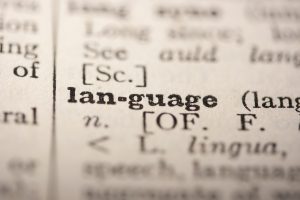As a middle power there are a number of things that are out of Australia’s control. It cannot control the behavior of the Chinese Communist Party, nor is there much that it can do about political instability in the United States. These are the country’s two primary foreign policy dilemmas — although this week’s midterms in the U.S. may have produced a little less doom than expected. What Australia can be in control of is finding ways to enhance its own capabilities — especially the ability to educate its population in a manner that has an understanding of the country’s requirements, and an ambition about where it sees its future.
As I’ve written previously, Australia’s lack of economic complexity is a serious failure of national strategy. A critical component of this is the country’s almost comical disinterest in learning languages other than English. Despite Australia being a highly multilingual society, the burden of maintaining language fluency generally falls to families and their community groups. The country’s education system is bereft of any serious efforts to provide students with literacy skills in languages beyond English.
In Australia’s largest state, New South Wales, only around 10 percent of students study a language in the final years of secondary school, indicating that most students who are afforded language study earlier in their schooling drop these subjects as they progress. The current system relies on sustained interest from students, and has weak incentives to maintain that interest. The country as a whole fails to consider language learning important enough to make it compulsory throughout the entirety of a student’s education. There is no clear national strategy and definitely no impetus to create a wholesale linguistically capable population.
Since July I have been based in Sweden. In the 1960s, Sweden made a strategic decision that it was a national imperative to create a fluently bilingual population in both Swedish and English. Having spent four months in the country, and having very little Swedish skills of my own, I have yet to encounter any adult (or teenager) who doesn’t speak excellent – and often flawless – English. The country now has advanced level English capability built into every sector of its society.
Next door in Finland, the country has a trilingual education system, with compulsory education in its two national languages of Finnish and Swedish, and an additional third language (usually English).
For many countries trilingualism is the norm. Most of Australia’s burgeoning Indian population would be comfortable operating in at least three languages, for example Punjabi, Hindi, and English. This may currently be considered extraordinary in Australia, but globally it is monolingualism that is actually uncommon. Australia should come to this realization.
It is with trilingualism that Australia could demonstrate some genuine ambition. It may be a massive leap for Australia to jump from its current linguistic lassitude to the compulsory learning of two additional languages, but the country’s capability deficit – and increasingly difficult strategic terrain – requires it to start to think big and be bold.
With education being mostly the responsibility of the states, Australia’s federalism allows it the opportunity to diversify its language strategy. Canberra could identify eight to ten languages that it considers of strategic importance and split their learning along state lines. For example, New South Wales could focus on learning Mandarin and French, Victoria could learn Spanish and Japanese, and Queensland could learn Indonesian and German. There may be competition between the states to learn languages considered important or advantageous, but Canberra could assess which languages would be suitable for each state based on population, regional economic activity and future opportunity.
This would give the country a massive pool of linguistically capable people to populate both its public and private sectors. It would also enhance Australia’s competitive federalism. A business in Sydney that required a specific skill-set with the ability to speak Indonesian would know it could find this talent in Queensland quite easily. And most importantly having these linguistic capabilities would explode the opportunities and perspectives of each individual in Australian society – enabling Australia’s youth to build the creativity that the country desperately needs.
Having a linguistically capable population would also enhance Australia’s ability to engage diplomatically with other countries. Only having a limited cohort of fluent local language speakers to draw upon for Australia’s various foreign missions undermines the country’s diplomatic capabilities. Or it comes with the expectation that other countries should engage with Australia only in English – which doesn’t help to create respect.
If Australia is heading into a future where the United States is becoming less reliable, then Australia’s reliance on the global power of English is also something that needs reconsidering. Australia has the potential to create a more capable future for itself through its education system, it’s just a matter of whether it has the foresight and will to do so.

































